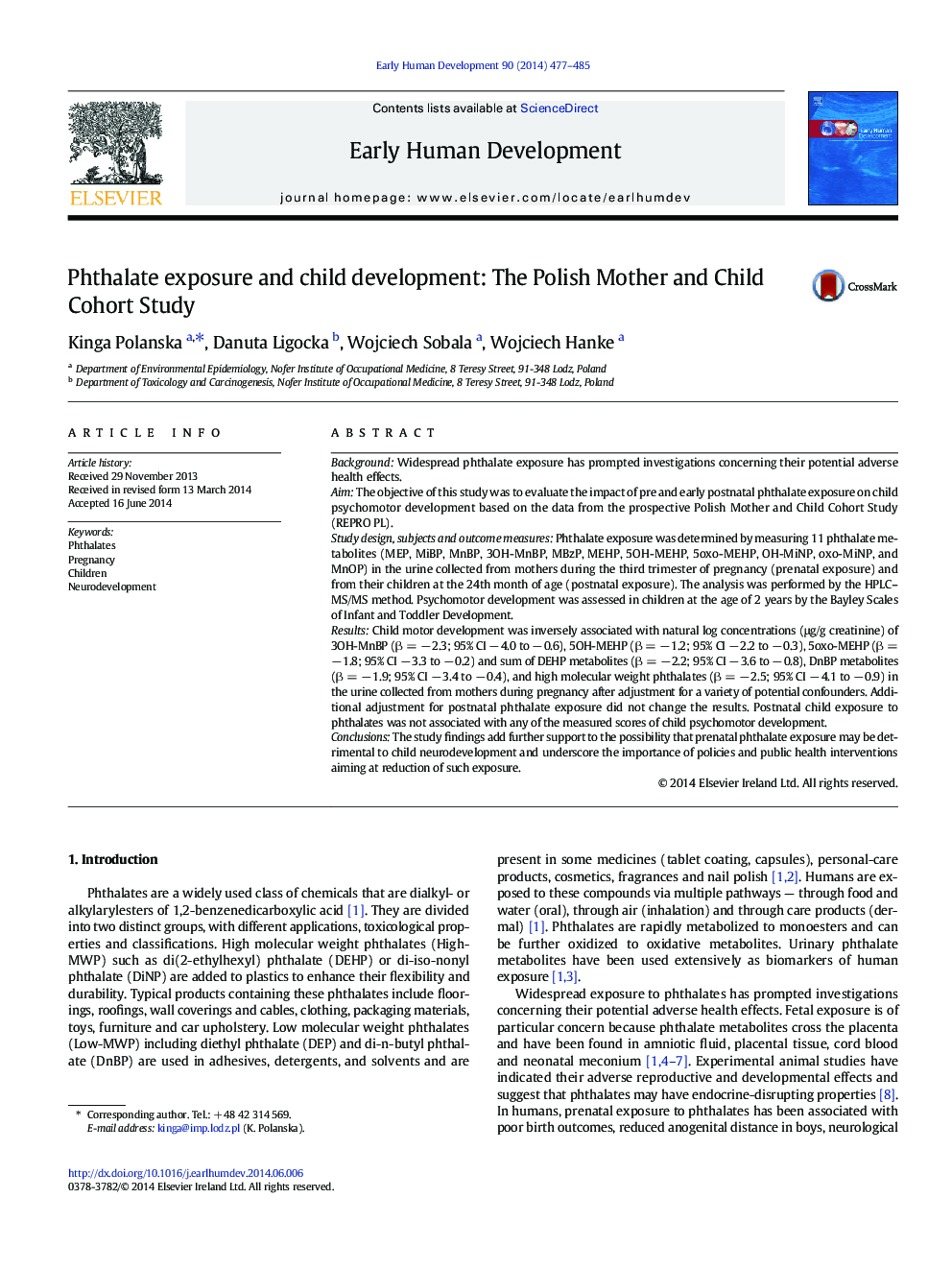| Article ID | Journal | Published Year | Pages | File Type |
|---|---|---|---|---|
| 3916511 | Early Human Development | 2014 | 9 Pages |
•Prenatal phthalate exposure was inversely associated with child motor development.•Postnatal child exposure to phthalates was not associated with any of the measured scores of child psychomotor development.•The study underscores the importance of policies and public health interventions aiming at reduction of phthalate exposure.
BackgroundWidespread phthalate exposure has prompted investigations concerning their potential adverse health effects.AimThe objective of this study was to evaluate the impact of pre and early postnatal phthalate exposure on child psychomotor development based on the data from the prospective Polish Mother and Child Cohort Study (REPRO PL).Study design, subjects and outcome measuresPhthalate exposure was determined by measuring 11 phthalate metabolites (MEP, MiBP, MnBP, 3OH-MnBP, MBzP, MEHP, 5OH-MEHP, 5oxo-MEHP, OH-MiNP, oxo-MiNP, and MnOP) in the urine collected from mothers during the third trimester of pregnancy (prenatal exposure) and from their children at the 24th month of age (postnatal exposure). The analysis was performed by the HPLC–MS/MS method. Psychomotor development was assessed in children at the age of 2 years by the Bayley Scales of Infant and Toddler Development.ResultsChild motor development was inversely associated with natural log concentrations (μg/g creatinine) of 3OH-MnBP (β = − 2.3; 95% CI − 4.0 to − 0.6), 5OH-MEHP (β = − 1.2; 95% CI − 2.2 to − 0.3), 5oxo-MEHP (β = − 1.8; 95% CI − 3.3 to − 0.2) and sum of DEHP metabolites (β = − 2.2; 95% CI − 3.6 to − 0.8), DnBP metabolites (β = − 1.9; 95% CI − 3.4 to − 0.4), and high molecular weight phthalates (β = − 2.5; 95% CI − 4.1 to − 0.9) in the urine collected from mothers during pregnancy after adjustment for a variety of potential confounders. Additional adjustment for postnatal phthalate exposure did not change the results. Postnatal child exposure to phthalates was not associated with any of the measured scores of child psychomotor development.ConclusionsThe study findings add further support to the possibility that prenatal phthalate exposure may be detrimental to child neurodevelopment and underscore the importance of policies and public health interventions aiming at reduction of such exposure.
